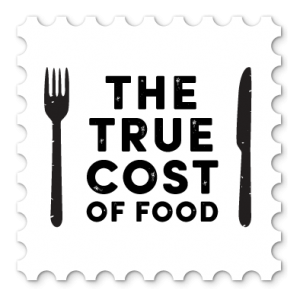The True Cost of Food

We also must understand that government subsidies hide the the true cost of food, making some food groups seem more affordable than what they truly are.
In case you don’t know, government subsidies are cash injections, given to certain industries, to help those industries reduce their sales prices and increase their bottom line. This means that the cost of those products are more expensive than what is reflected on their prices at the store. At the end of the day, we are paying for those subsidies through our taxes. The greatest beneficiaries of these subsidies are large industry leaders, and corporations that receive free money from the government.
On July 19, 2016, the New York Times released a story called “How the Government Supports Your Junk Food Habit”. The article explains how three quarters of the country is currently overweight, or obese, and how junk foods are the largest source of calories in the American diet.
The article also includes a report from the Dietary Guidelines Advisory Committee. The report shows the top 10 sources of calories in the U.S. diet. These include grain-based desserts, yeast breads, chicken dishes, soda, energy drinks, and sports drinks, pizza, alcoholic beverages, pasta dishes, mixed dishes, beef dishes ,and dairy desserts. The report explains that very few people follow the federal dietary guidelines, which recommend daily servings of dark green vegetables, orange vegetables, legumes, fruits, and whole grains. (1) (3)
The saddest and most angering part of this, is that the United States government is supporting and encouraging this behavior. The government is using taxpayer’s money, to subsidize the industries, that make junk food affordable to the masses.
The foods created with these subsidies are made with seven main ingredients, including corn, soybeans, wheat, rice, sorghum, milk, and meat. All oft these are heavily subsidized by the federal government. The New York Time reported that between 1995 and 2010, the government doled out $170 billion in agricultural subsidies to finance the production of those foods.
Most people aren’t even consuming those products in their whole natural state. Only a small percentage of them are prepared at home. Most are used to feed livestock, or converted to low quality products and additives like corn sweeteners, industrial oils, processed meats, and refined carbohydrates. (2)
We can easily see some contradictions here. The federal government recommends that people fill half their plates with fruits and vegetables. However, only a small fraction of the government’s subsidies actually support production of fresh produce.
Reports from the U.S. Public Interest Research Group, a nonprofit consumer advocacy organization, explain the problem with subsides. In their own words, “subsidies damage our country’s health, and increase the medical costs that will ultimately need to be paid to treat the effects of the obesity epidemic”. They also share the idea that “taxpayers are paying for the privilege of making our country sick.” (4)
A study led by the Centers for Disease Control and Prevention was recently published on JAMA Internal Medicine. This study looked at over 10,000 adults, and the foods they reported eating on a typical day. Researchers found that “those who had the highest consumption of federally subsidized foods, had a 37% greater risk of being obese.” These subjects were also “significantly more likely to have belly fat, abnormal cholesterol, and high levels of blood sugar and CRP (a marker of inflammation).” Authors of the research say that “this strong association is consistent with other research, showing that diets higher in subsidized foods tend to be of worse quality, and more harmful to our health.” (5) (6)
These reports help us see how expensive the Standard American Diet truly is. Taxpayers are willingly giving their hard earned money, to unwillingly support food industries that are making the country sick. This pattern rises healthcare costs for all taxpayers, and lowers the quality of life for all citizens. Raw vegan and fruit based diets are a much better option. It might be time to Give Fruit a Chance.
Previous Section:
Next Section:
Acknowledgments
Thank you for reading!
Please donate to help us publish this book.
PayPal: trevesbruno@gmail.com
Venmo: @Bruno-Treves
Sources:
(1 & 2) https://well.blogs.nytimes.com/2016/07/19/how-the-government-supports-your-junk-food-habit/
(3) http://www.health.harvard.edu/healthy-eating/top-10-sources-of-calories-in-the-us-diet
(4) http://www.uspirg.org/sites/pirg/files/reports/Apples%20to%20Twinkies%20vUS_2.pdf
(5) https://well.blogs.nytimes.com/2016/07/19/how-the-government-supports-your-junk-food-habit/
(6) http://jamanetwork.com/journals/jamainternalmedicine/article-abstract/2530901



